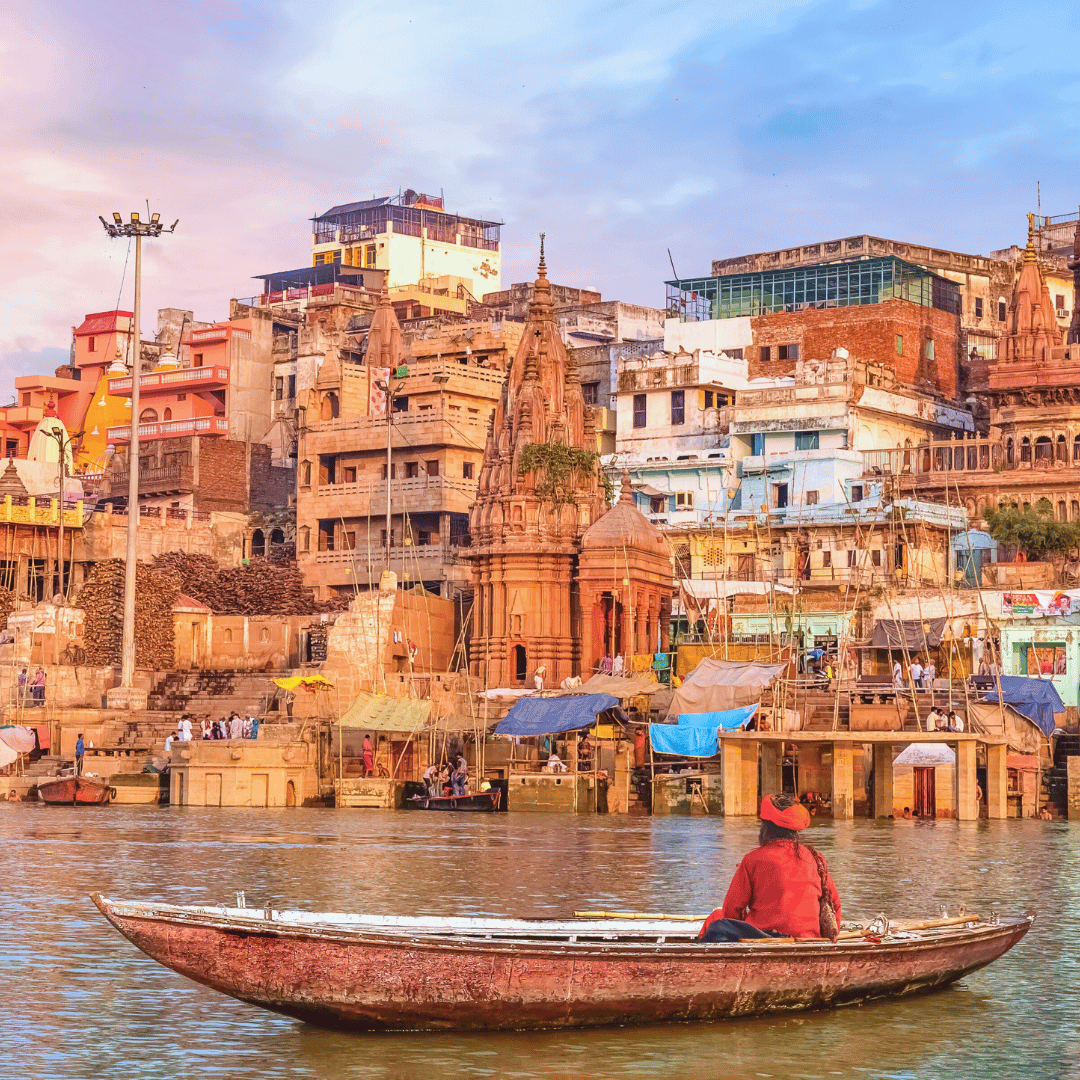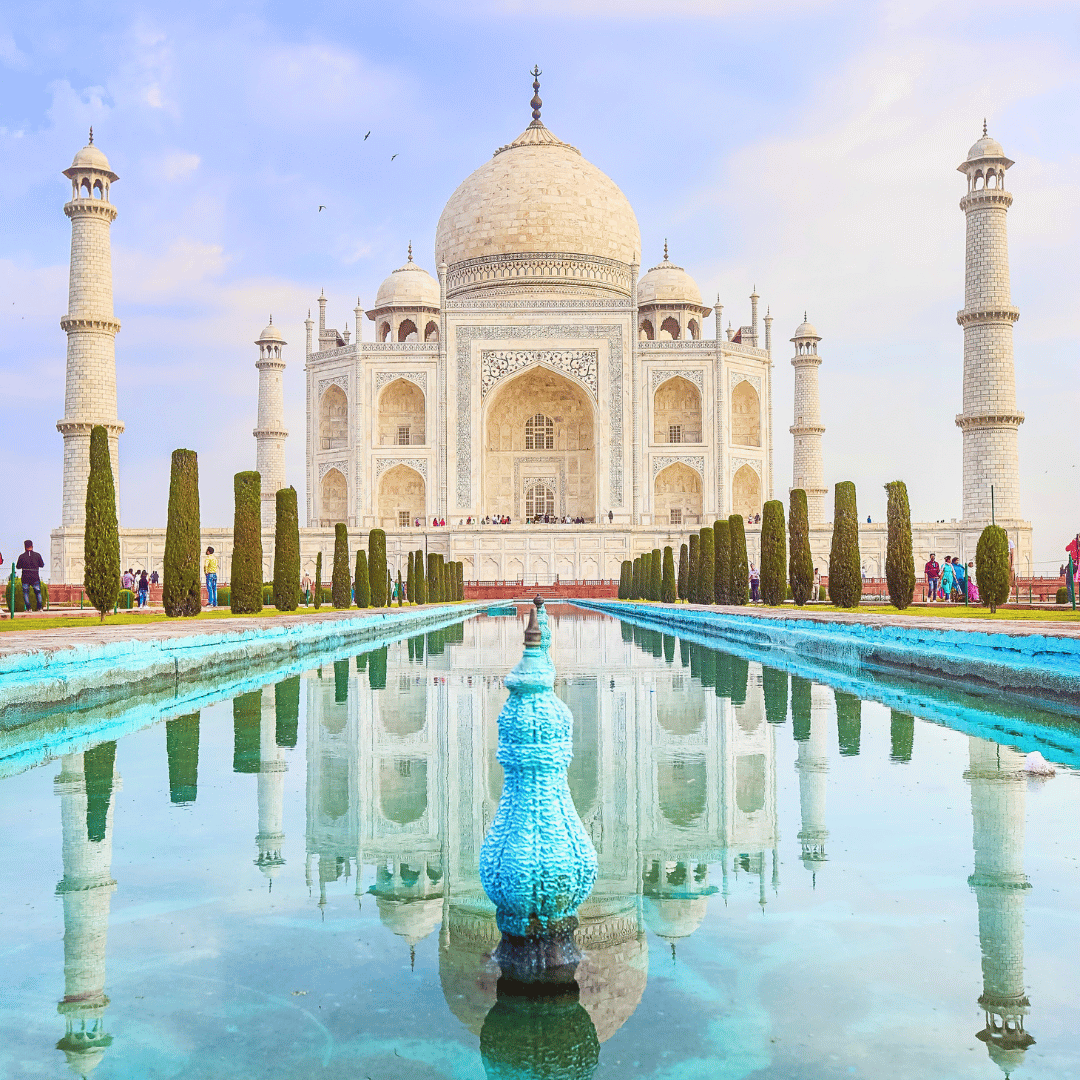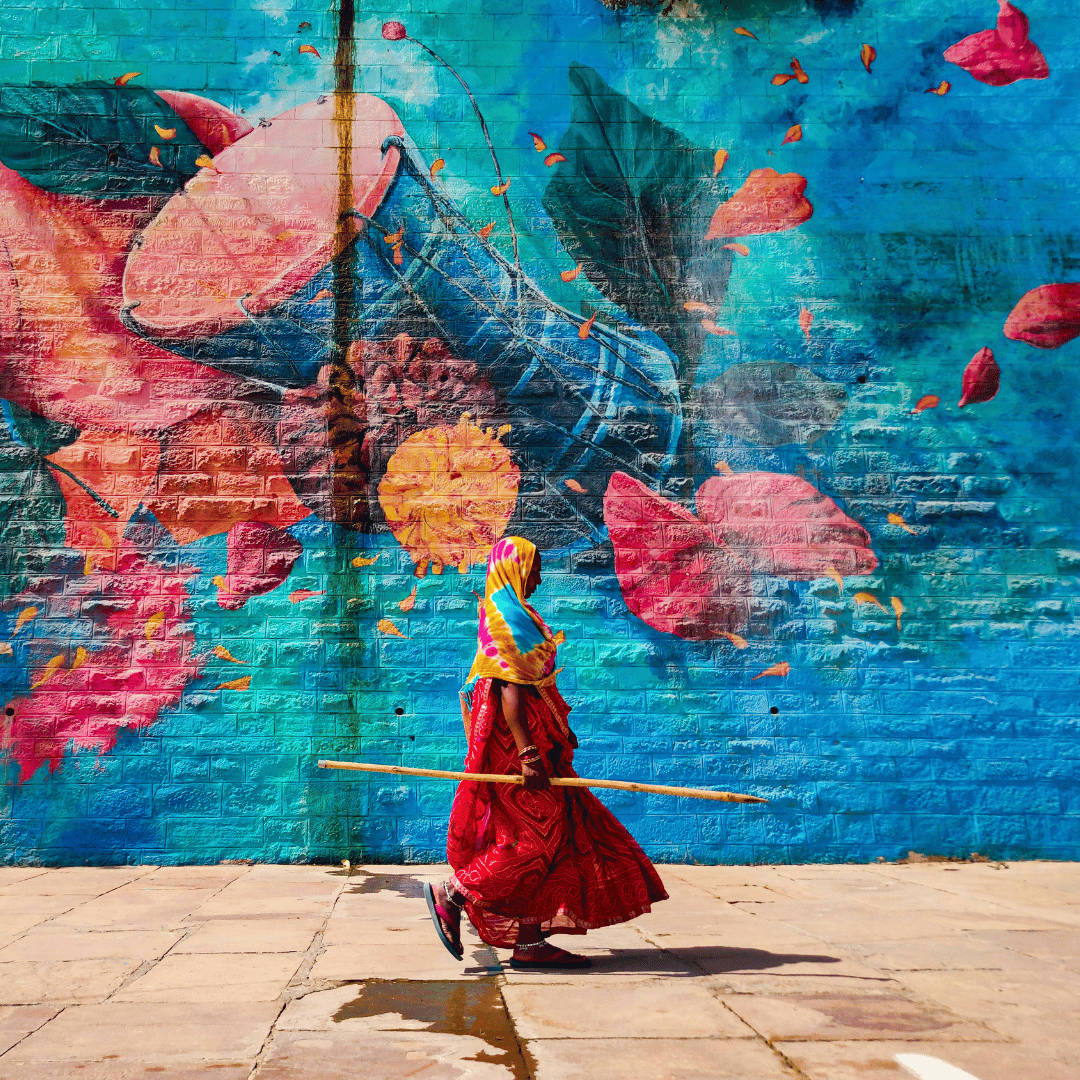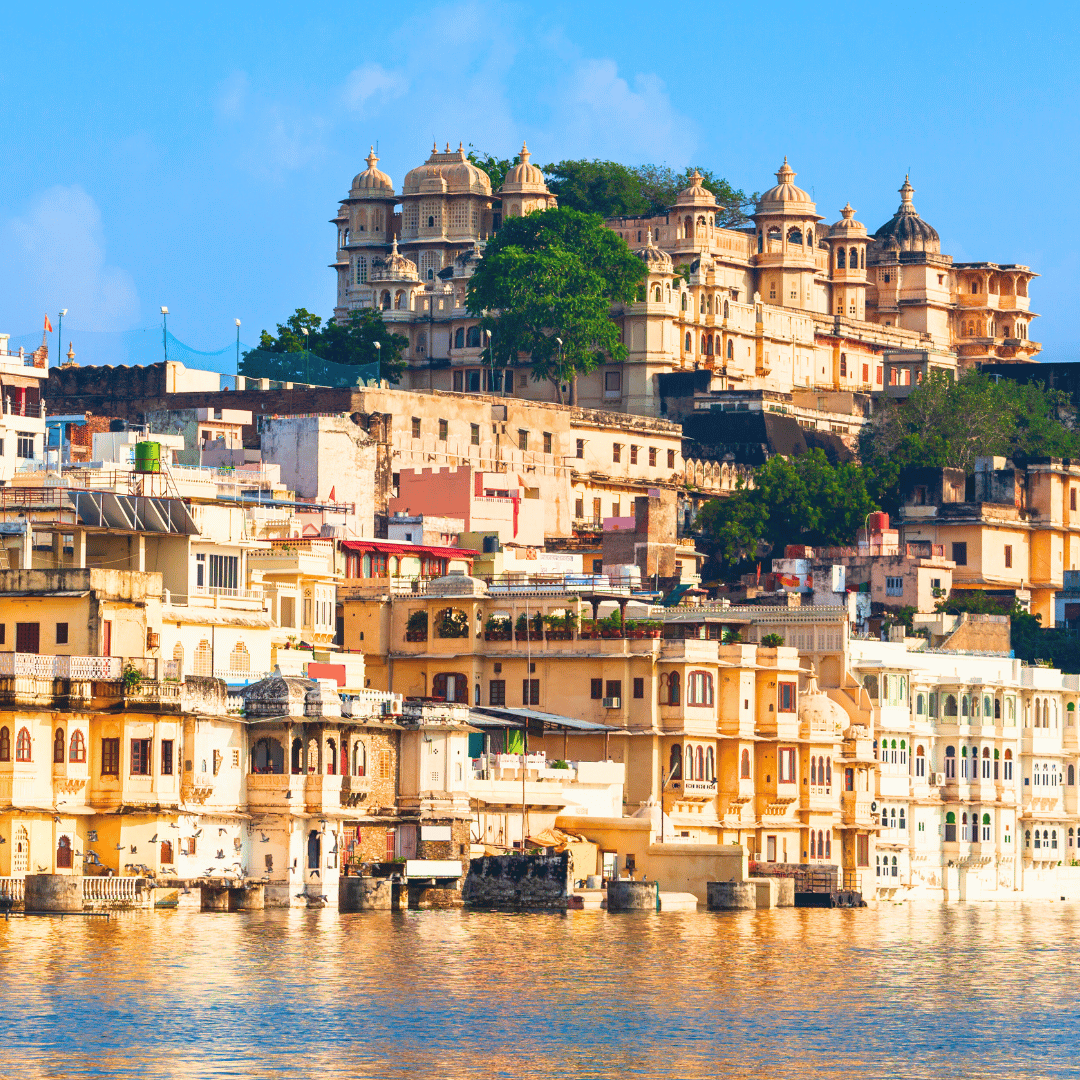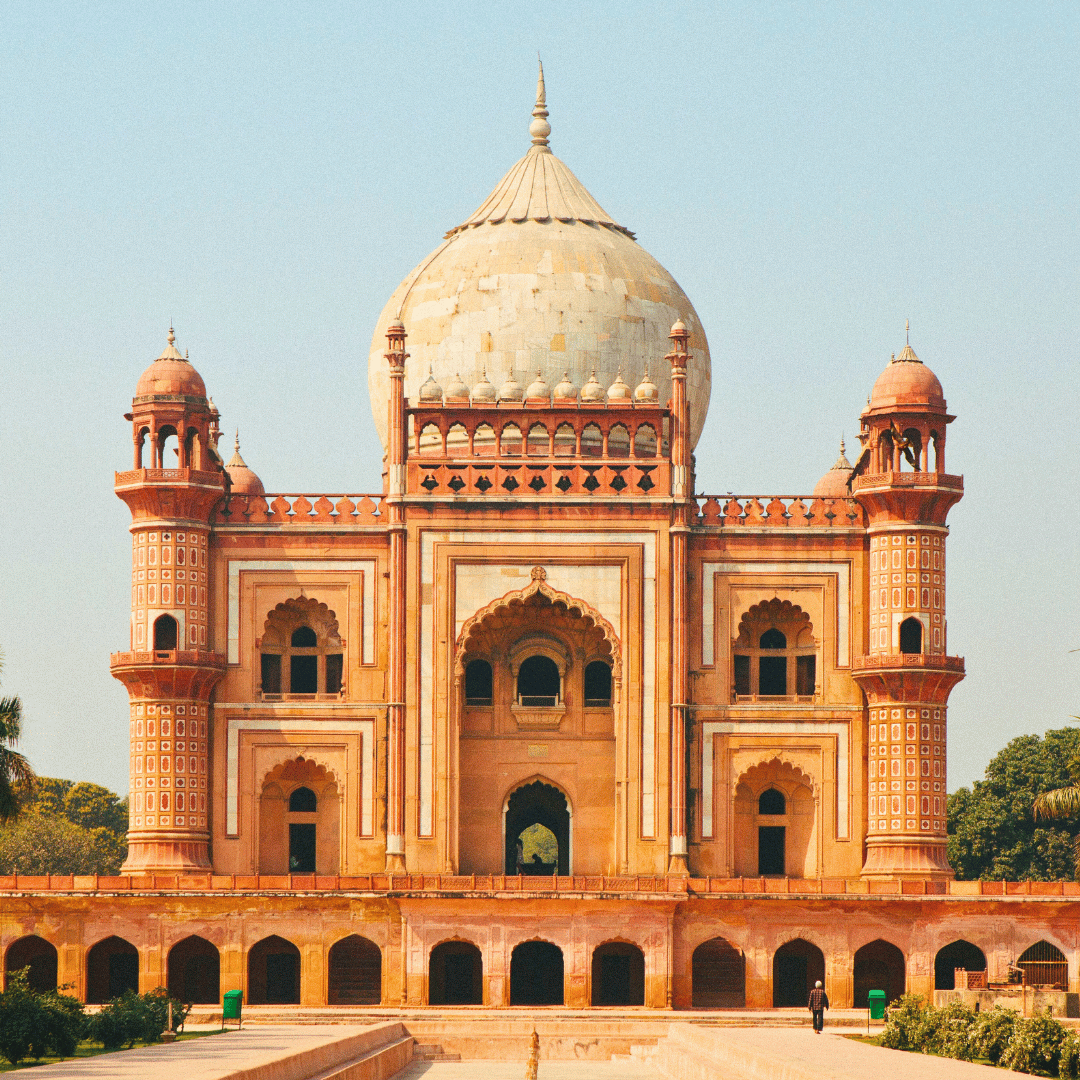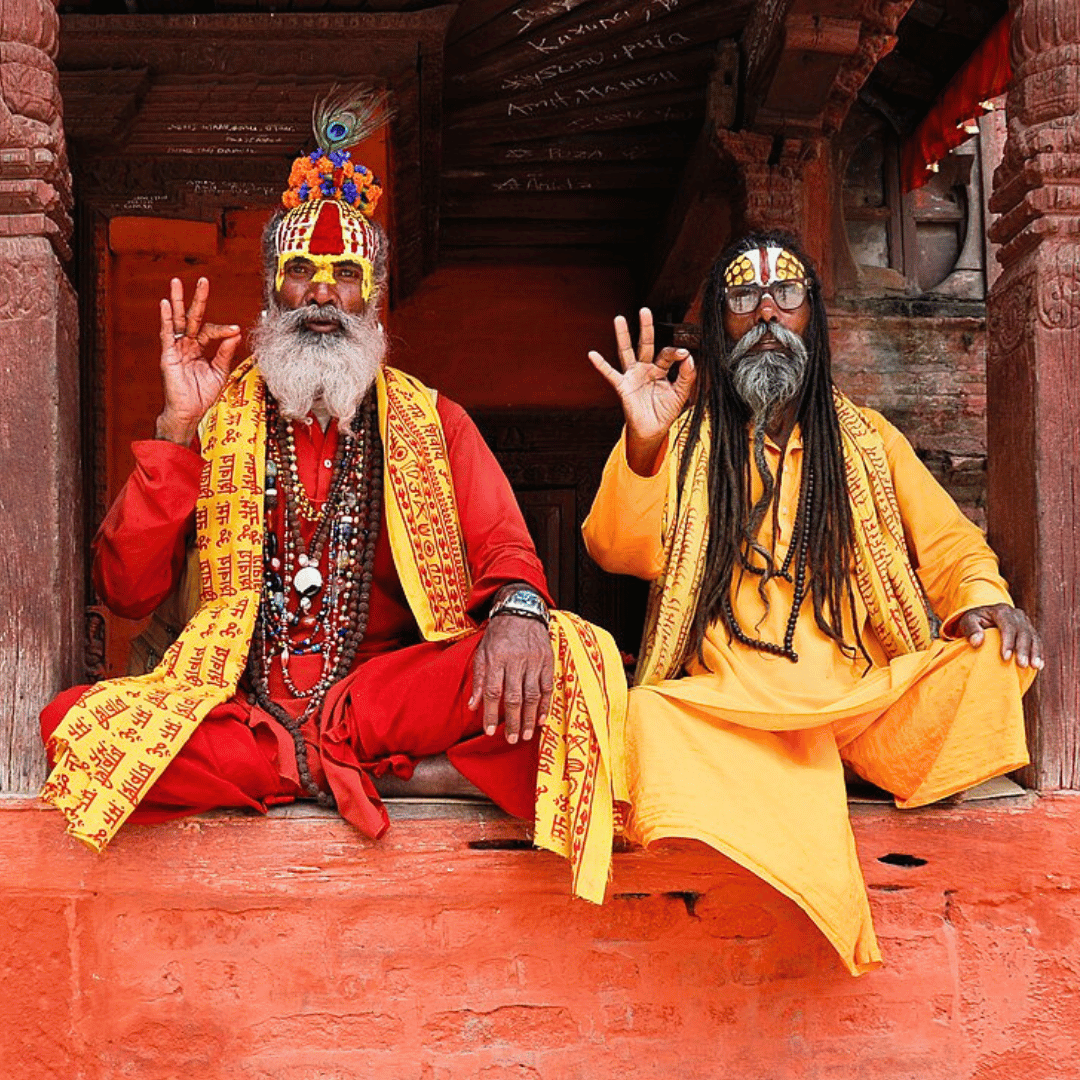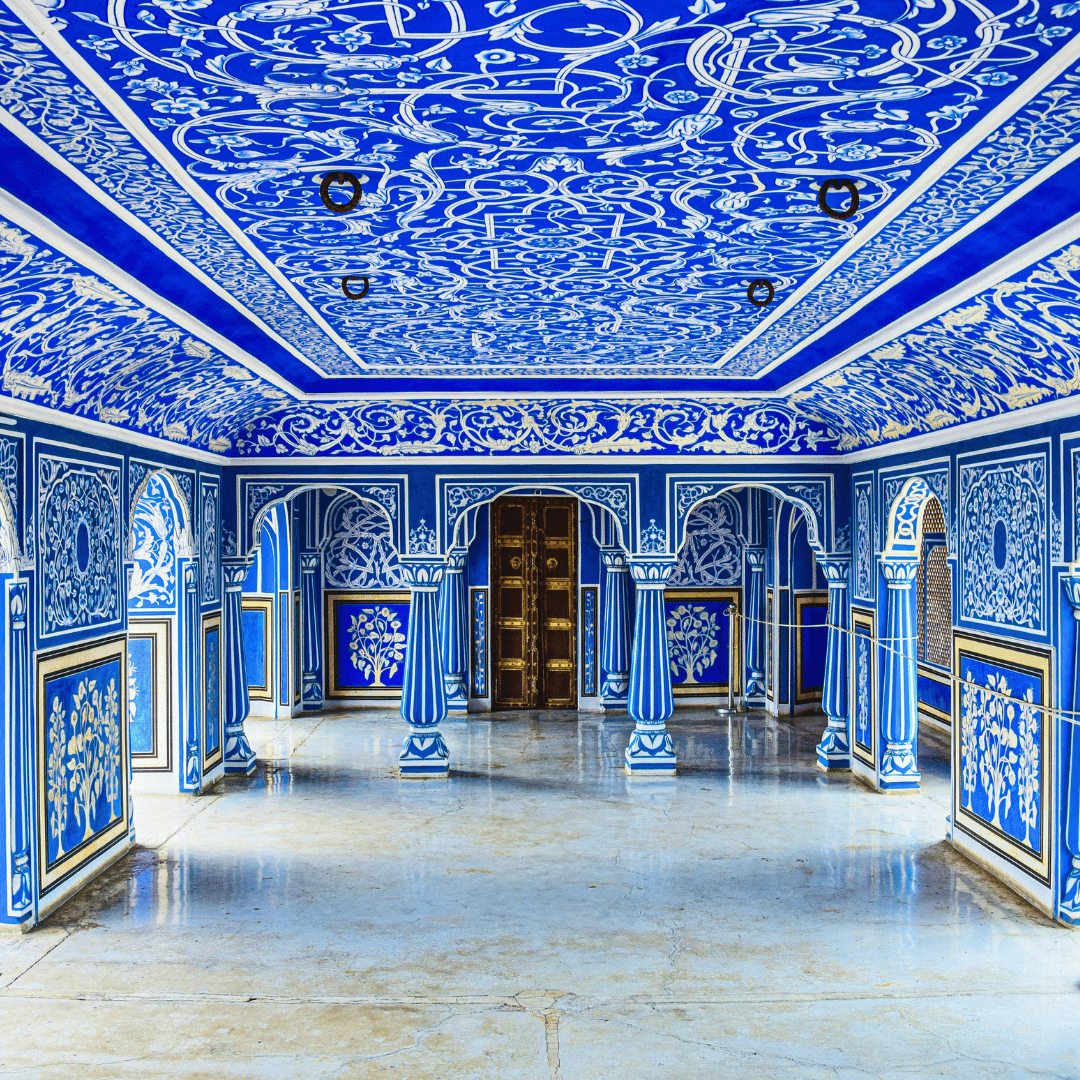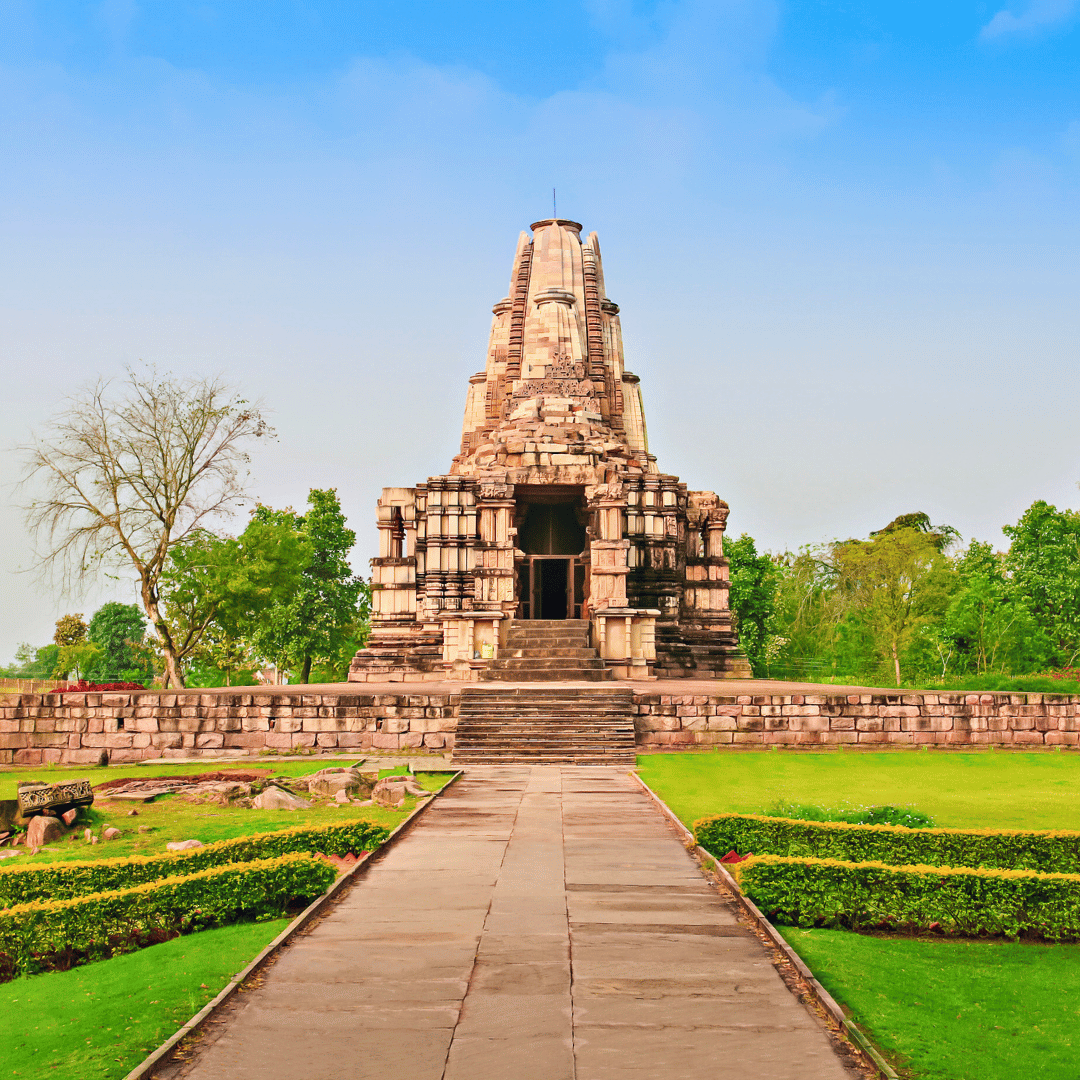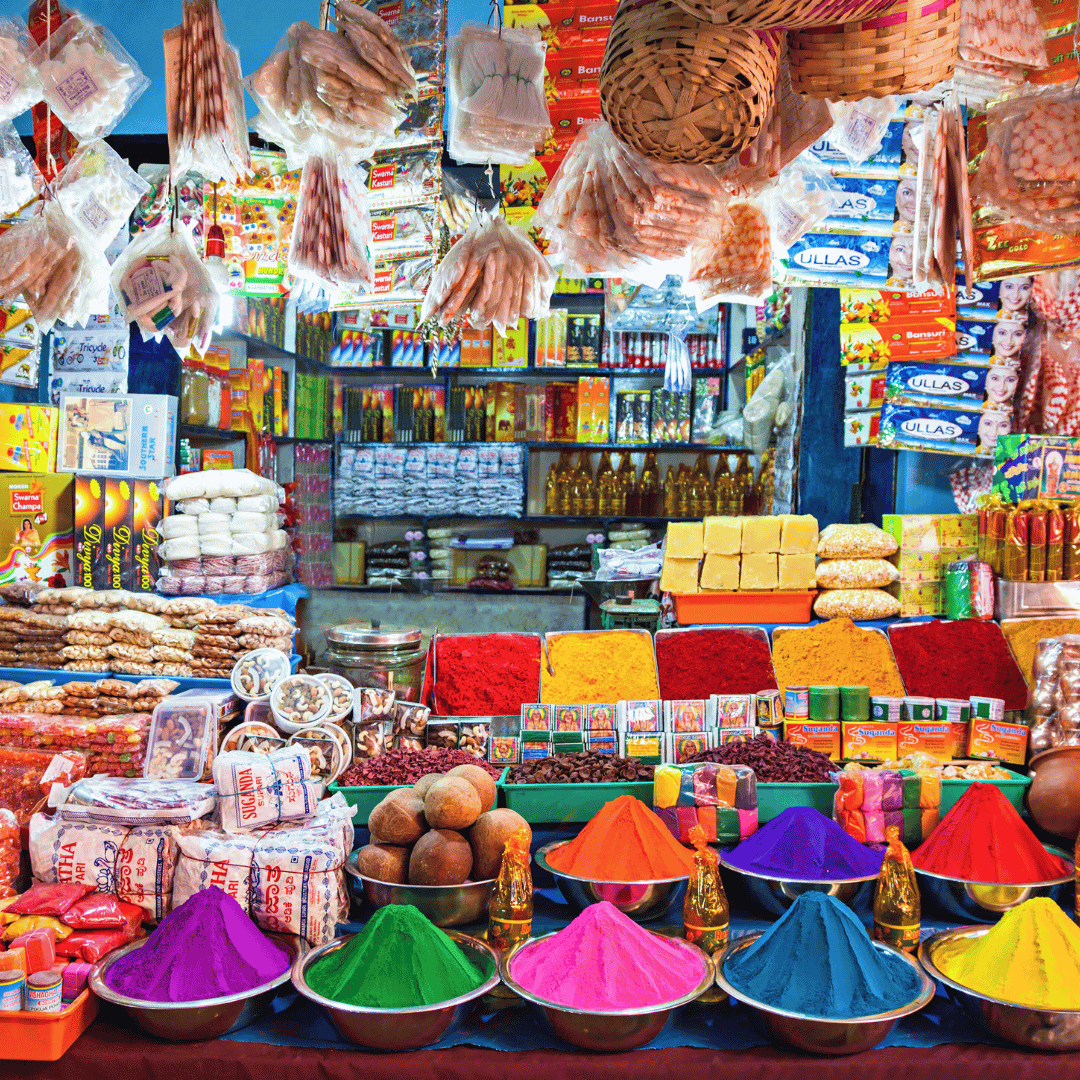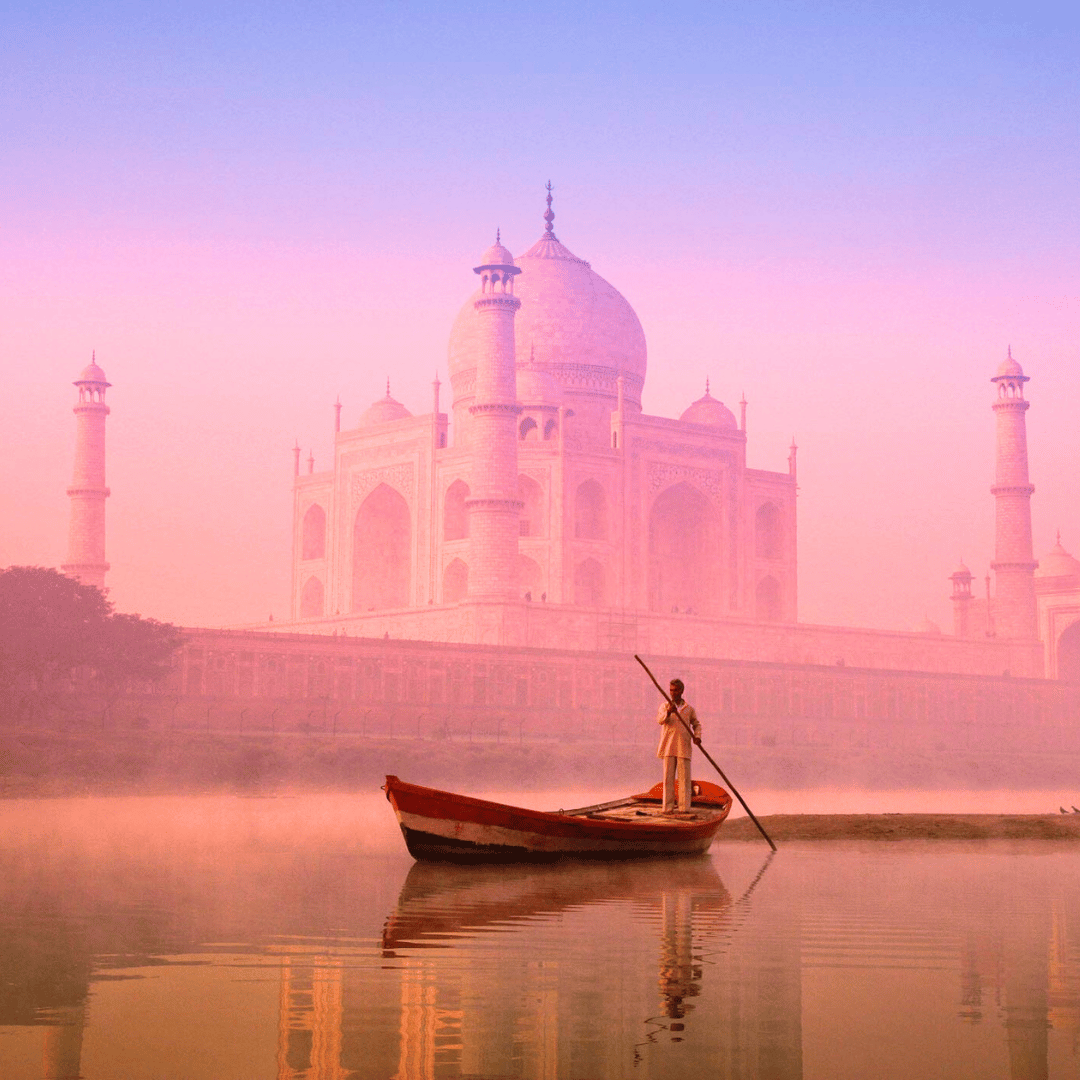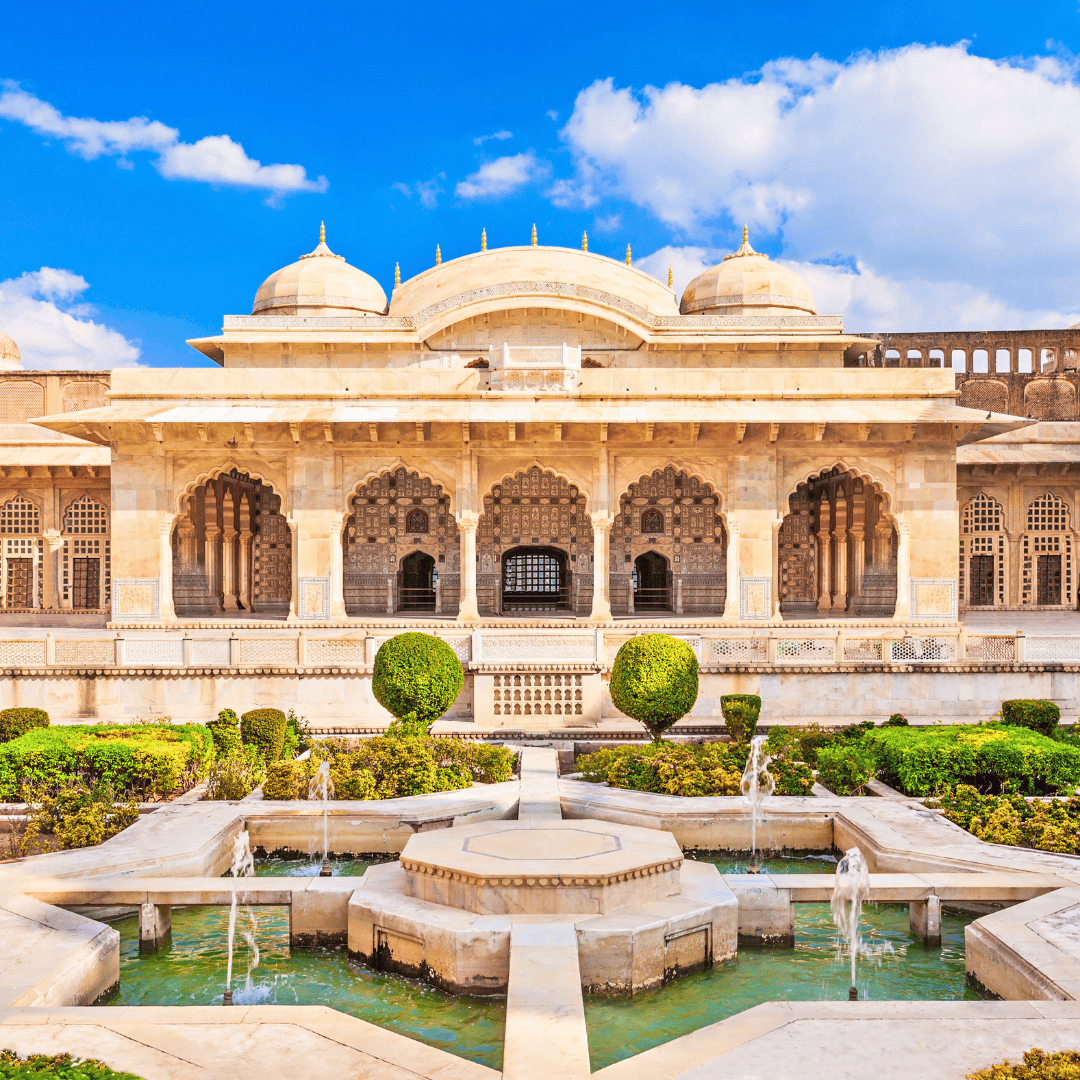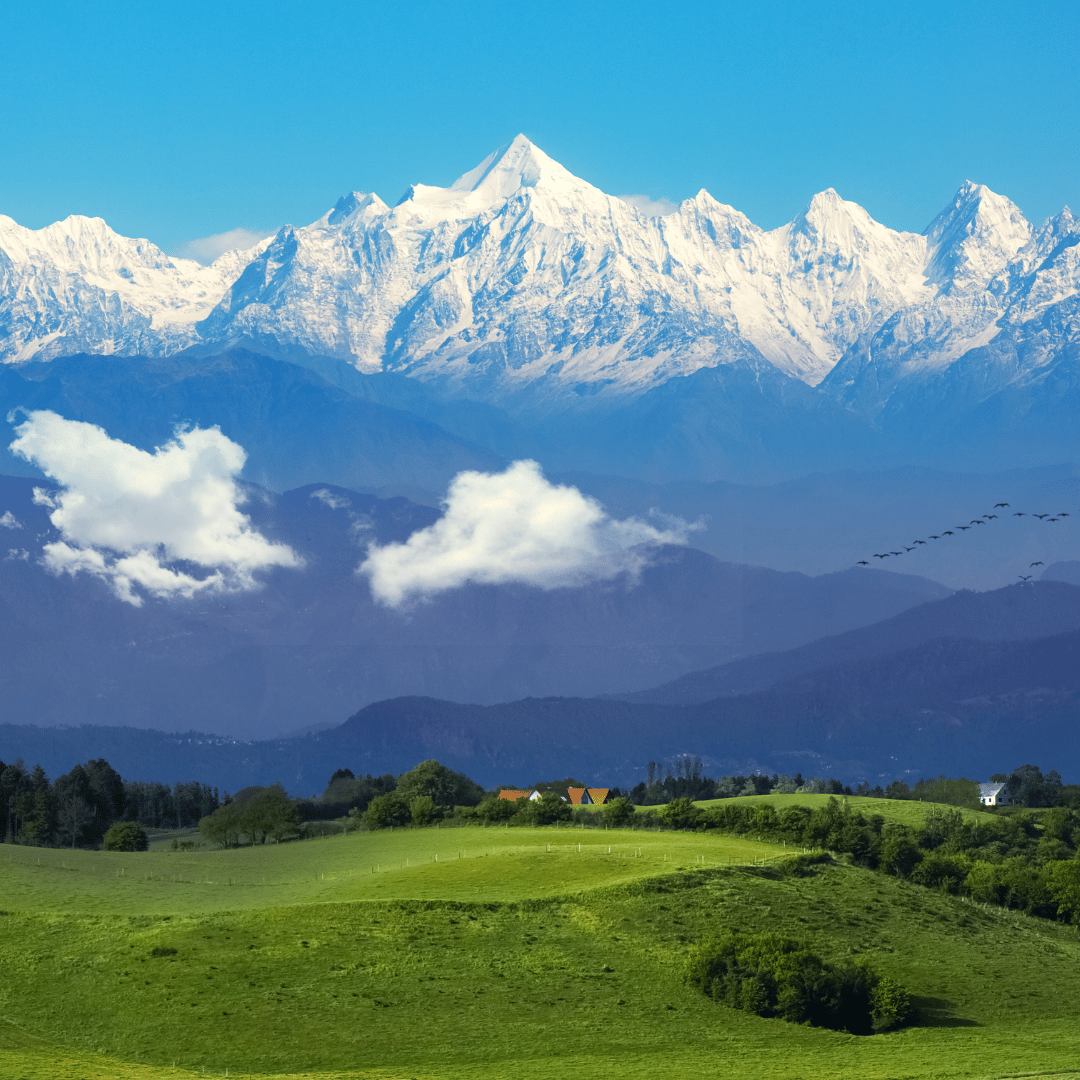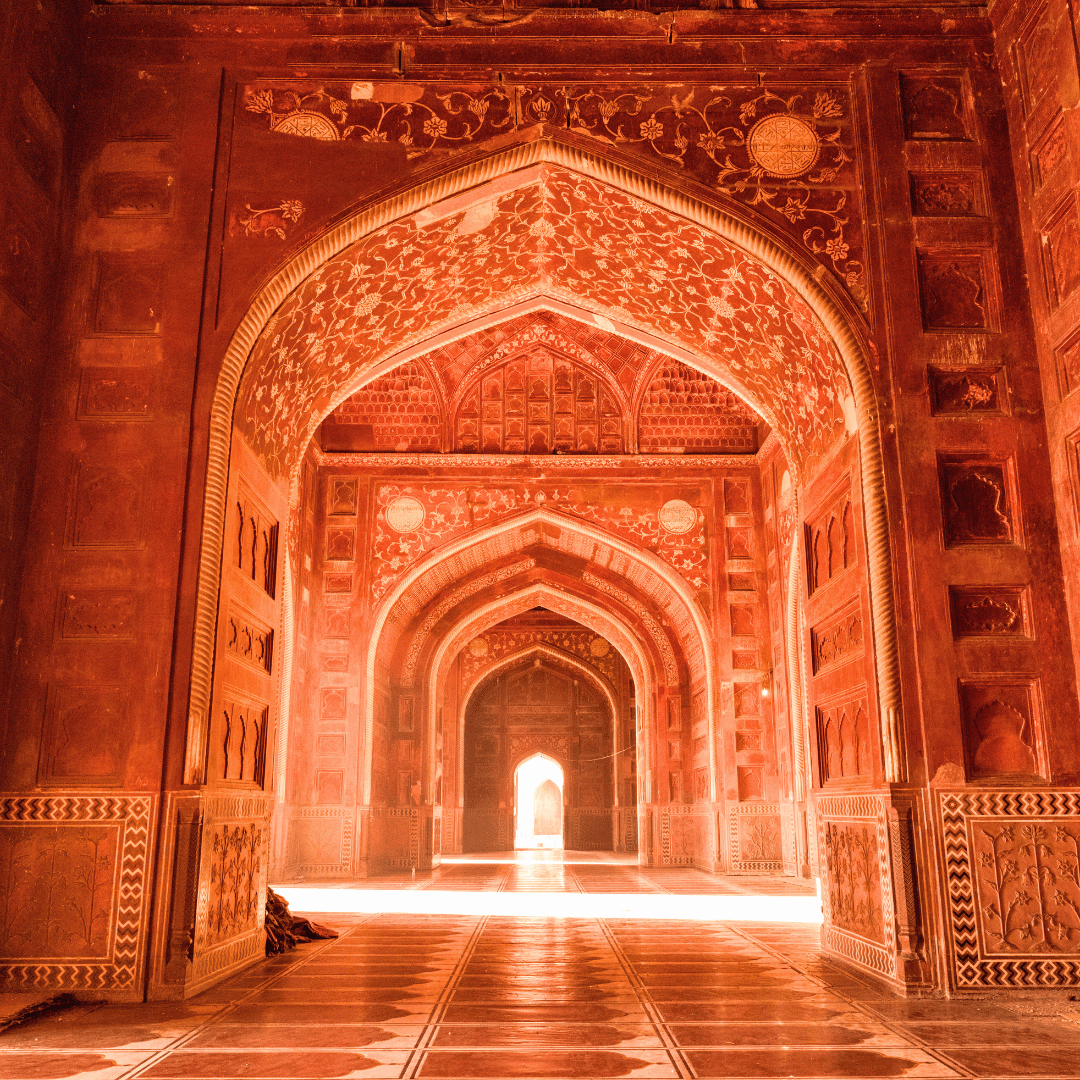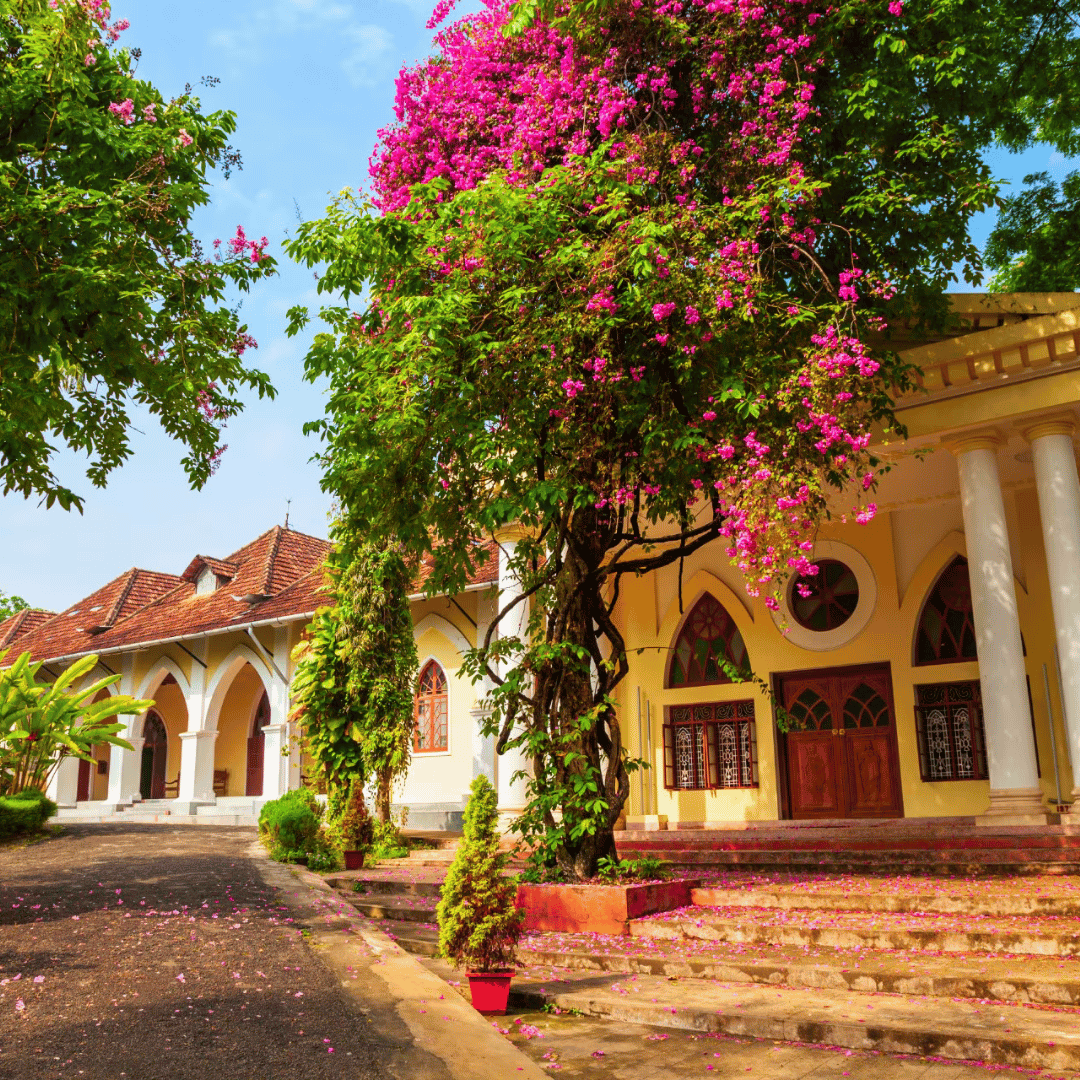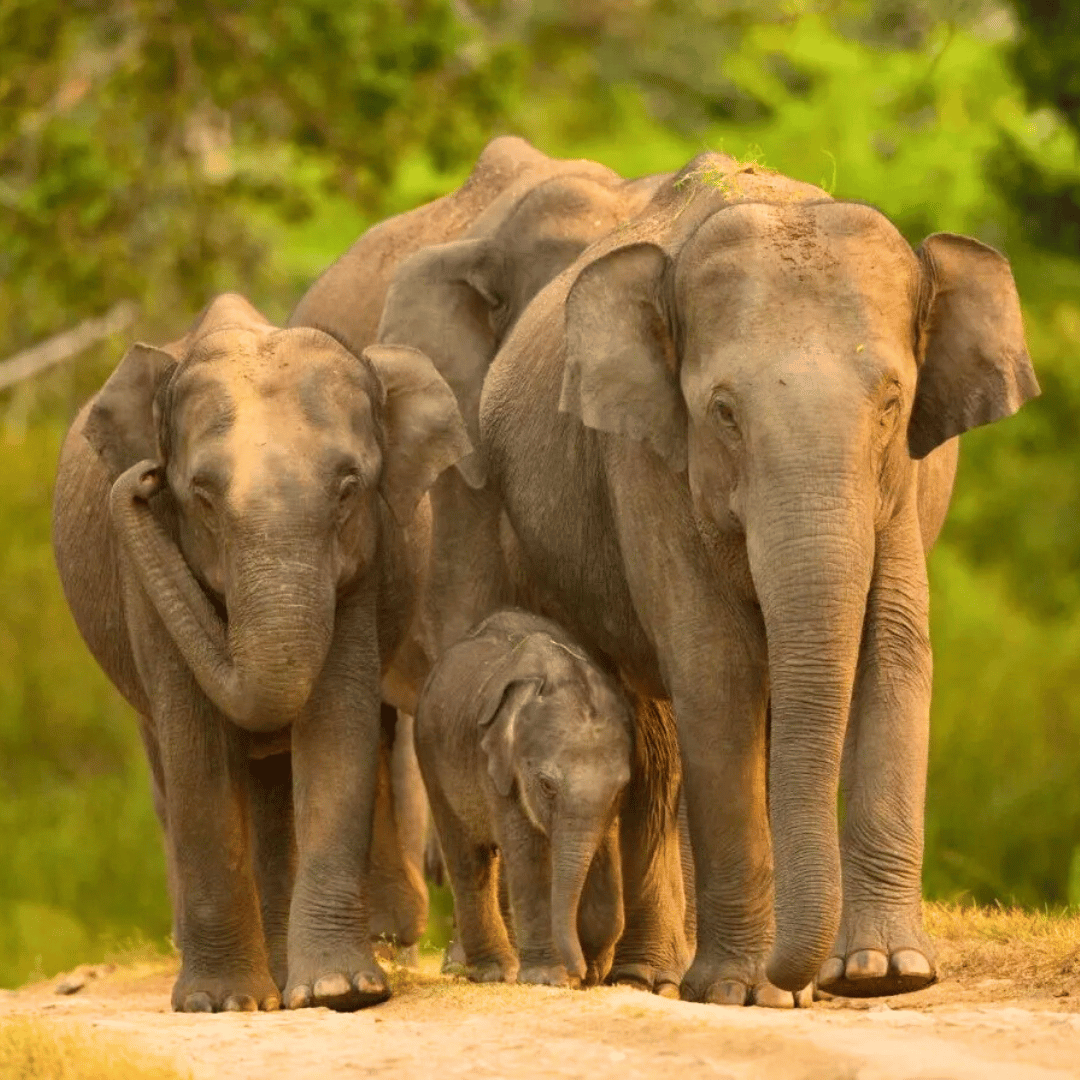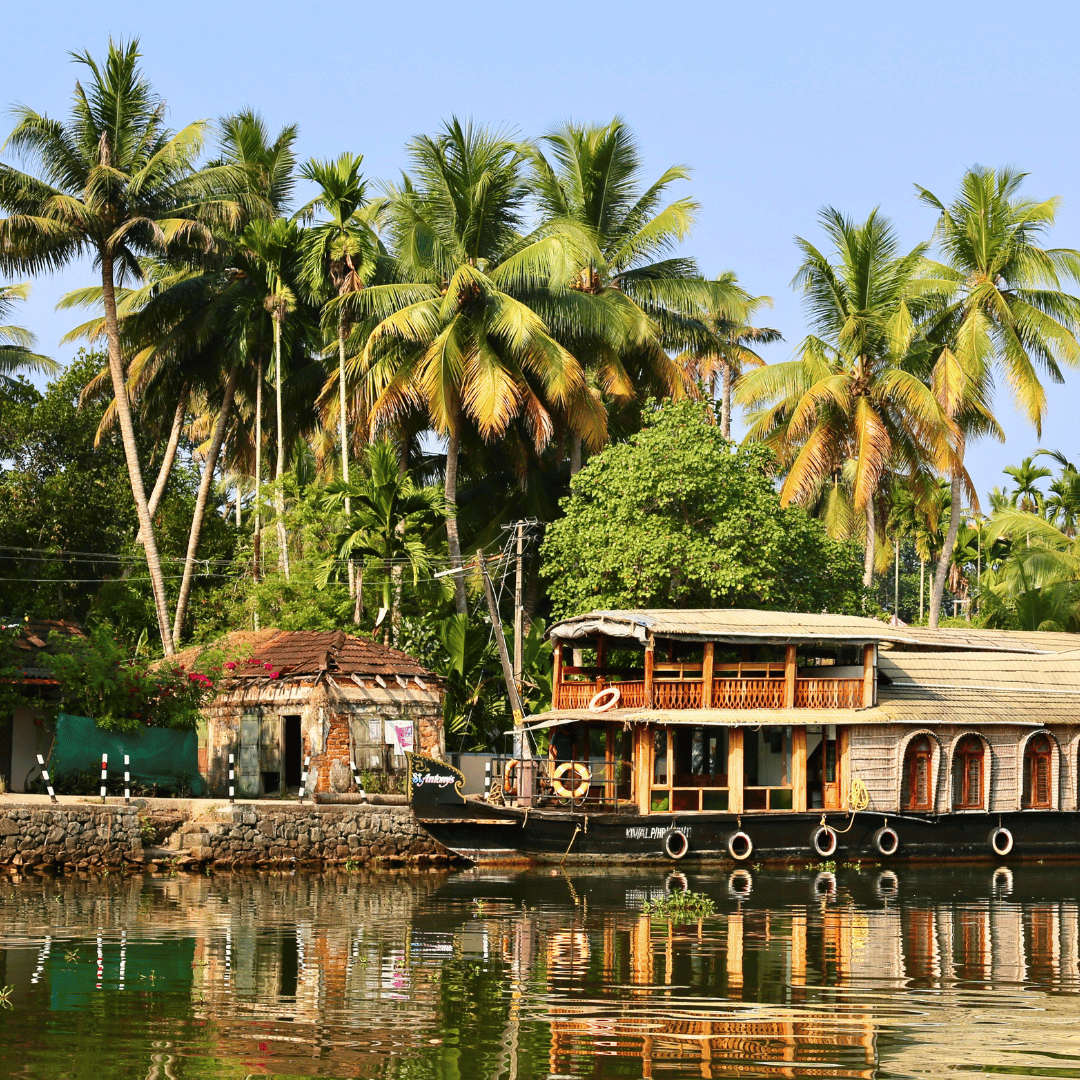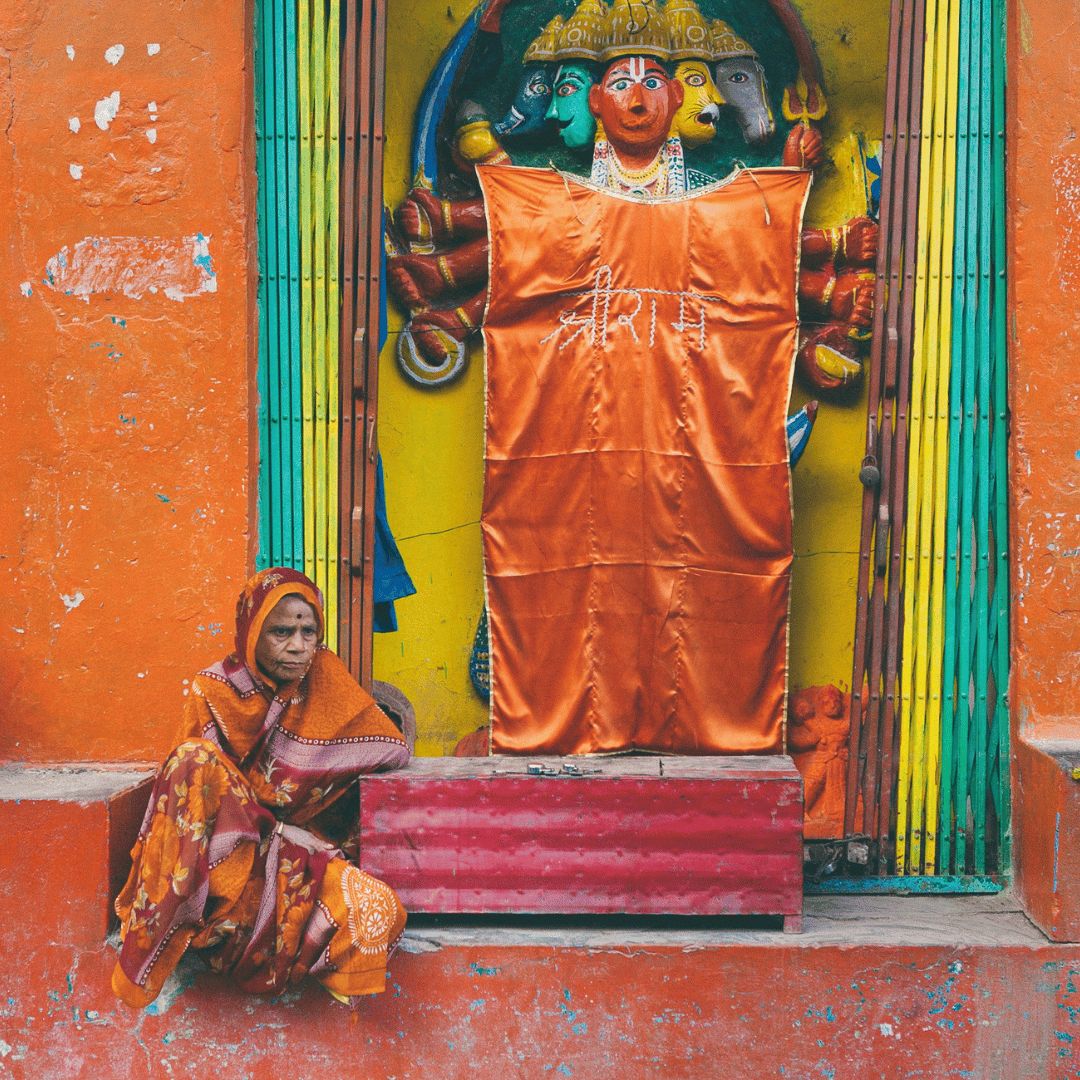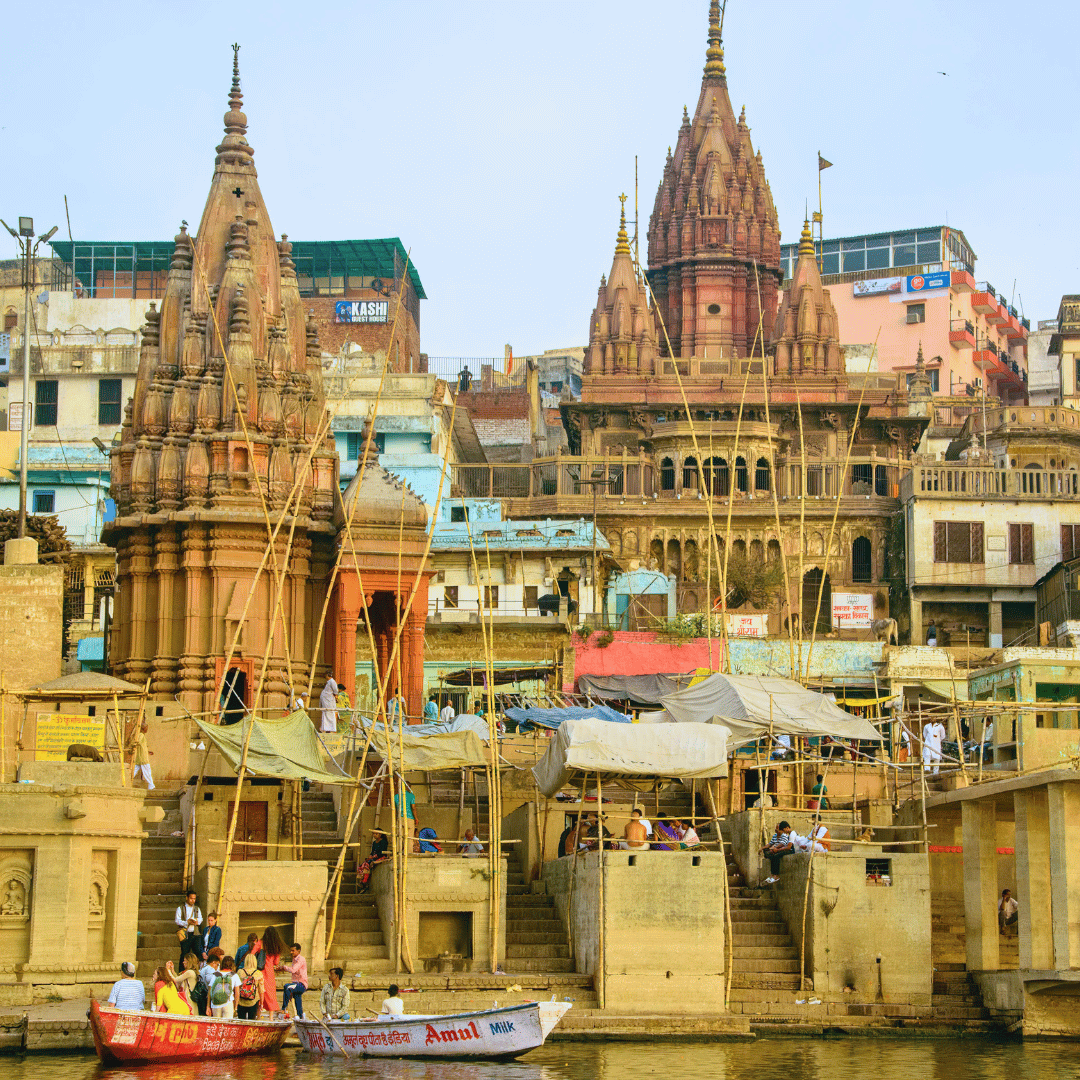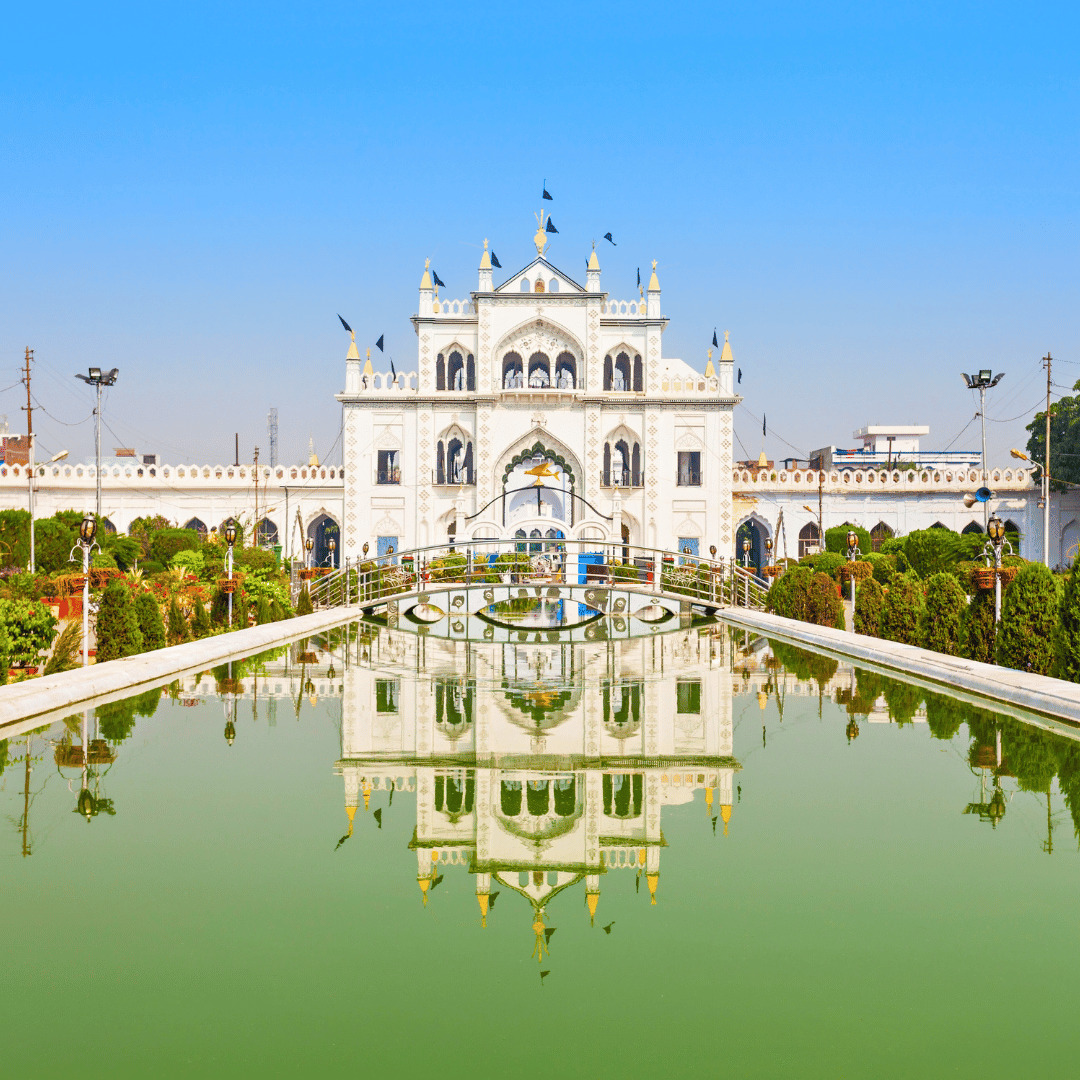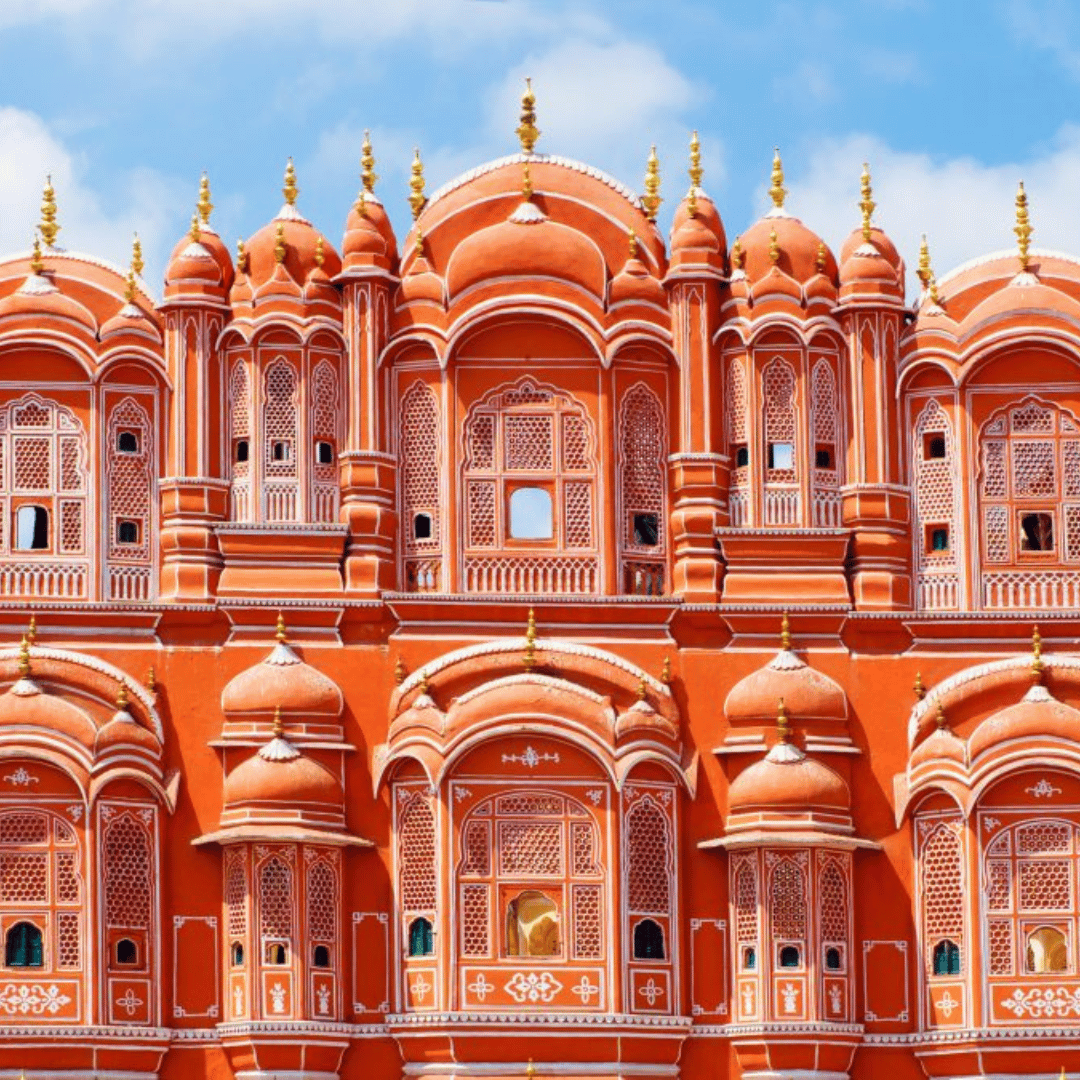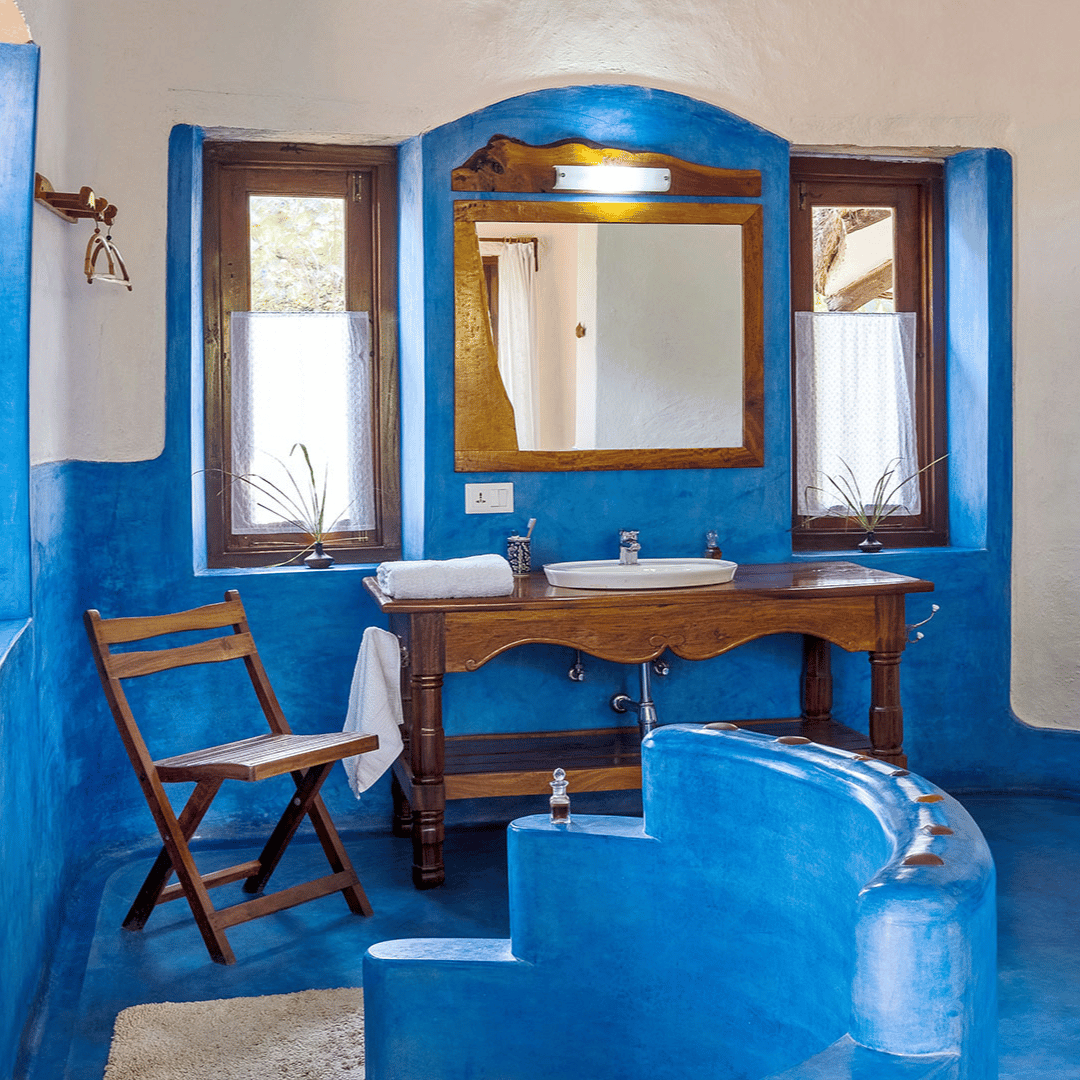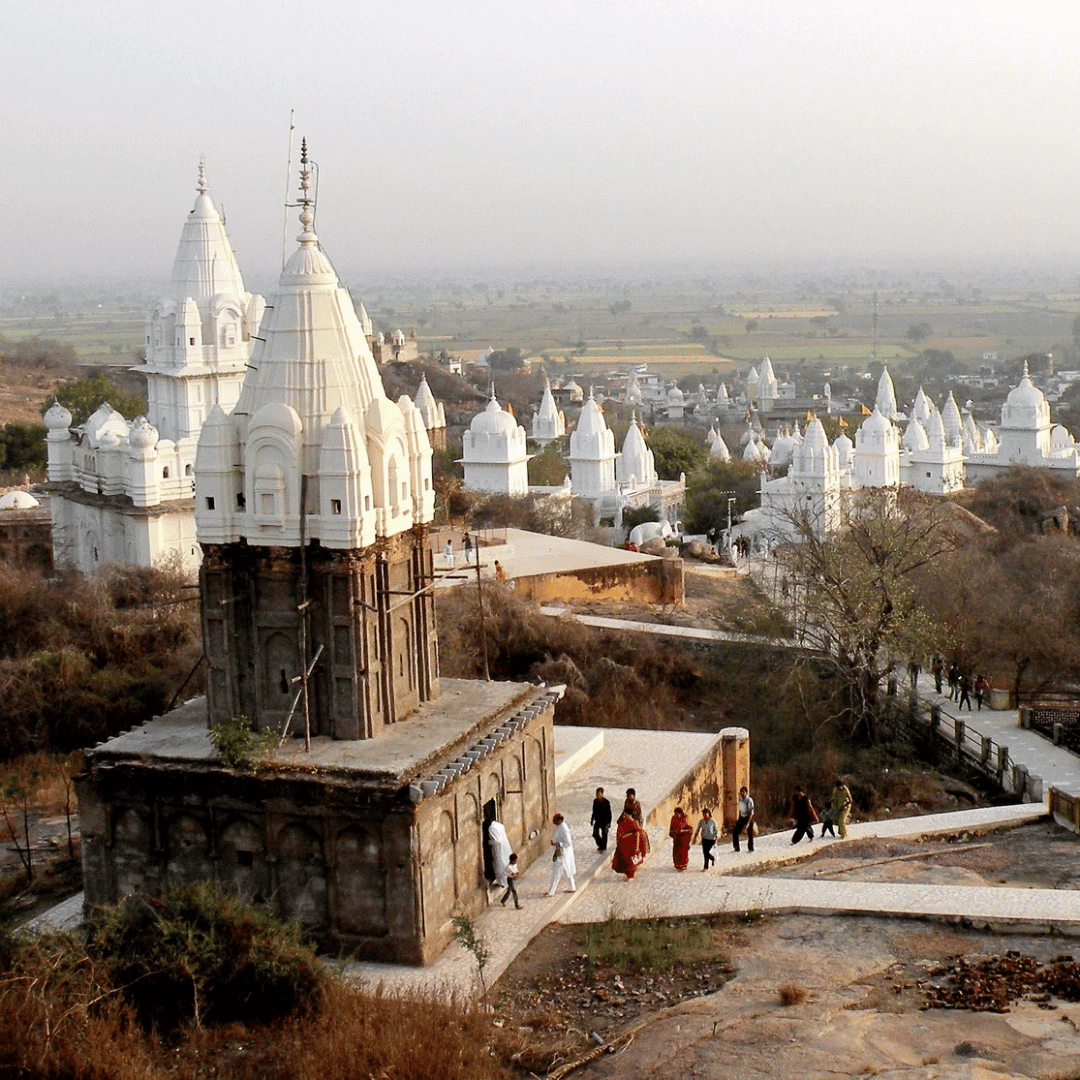North India Itinerary
-
Welcome to India! Delhi, a city where history and modernity intertwine, offers a fascinating contrast between its two distinct halves. Old Delhi, established in the 17th century by Mughal Emperor Shah Jahan, remains steeped in history, with its narrow, winding lanes, centuries-old markets, and grand architectural marvels such as the Red Fort and Jama Masjid. The streets are alive with the sights and sounds of street vendors, rickshaws, and traditional bazaars, evoking a sense of the past that still thrives in the present.
In contrast, New Delhi, developed during British rule and largely shaped by the designs of architect Edwin Lutyens, reflects a more structured and modern landscape. Wide boulevards, grand colonial buildings, and government institutions give it a stately atmosphere, while beyond the Lutyens-designed precincts, contemporary high-rises, business districts, and sprawling shopping centres mark its transformation into a global metropolis. The striking distinction between the historic heart of Old Delhi and the planned grandeur of New Delhi makes the city a compelling gateway into India’s diverse cultural and architectural heritage.
-
This morning, begin your exploration of Delhi with a visit to the medieval Jama Masjid, one of India’s largest and most impressive mosques. Built by Mughal Emperor Shah Jahan in the 17th century, its towering minarets and expansive courtyard offer a glimpse into the grandeur of Mughal architecture. From here, set off on a walking tour of Old Delhi, where the narrow, winding streets are alive with history, commerce, and craftsmanship. Discover artisans who have been practising traditional arts and crafts for six or seven generations, passing down their skills through the centuries. Stop at a charming old shop to sample Indian perfumes (attar) stored in elegant cut-glass bottles, each fragrance telling its own story of flowers, spices, and resins.
Continue to Kinari Bazaar, a vibrant marketplace renowned for its dazzling selection of embroidered silk sarees, intricate bangles, and colourful turbans, all of which contribute to the city’s rich textile heritage. A short walk away, the famous Khari Baoli spice market fills the air with the aromas of rice, dal, dried fruits, nuts, and saffron, creating an intoxicating sensory experience. If luck is on your side, you may also witness the fascinating tradition of pigeon flying, where a kabootar baz (pigeon fancier) skillfully commands flocks of birds in mesmerising formations against the sky.
In the afternoon, shift your focus to New Delhi’s historical landmarks, beginning with Humayun’s Tomb. This elegant 16th-century mausoleum, set within a geometrically designed Mughal garden, is a masterpiece of red sandstone and white marble that later influenced the design of the Taj Mahal. Nearby, the towering Qutab Minar, a UNESCO-listed monument, rises above the ruins of Delhi’s earliest settlements. Its five intricately carved storeys, adorned with Quranic inscriptions and geometric patterns, stand as a testament to Indo-Islamic artistry, while the mysterious Iron Pillar, which has defied rust for over a thousand years, adds another layer of historical intrigue.
Conclude the day with a drive through Lutyens’ Delhi, where stately colonial-era buildings such as India Gate, Rashtrapati Bhawan (President’s House), and Parliament House showcase the city’s British architectural legacy. With its wide avenues, tree-lined streets, and imposing monuments, this part of the city reflects a vision of grandeur and order that contrasts sharply with the bustling, historic charm of Old Delhi.
-
Transfer to the airport for your flight to Varanasi, where you’ll be met on arrival and taken to your hotel. The Ganges is India’s most sacred river, believed by Hindus to have flowed eternally from its divine source at the summit of Mount Meru, the mythical mountain said to be at the centre of the universe and home to the gods. Worshipped as the goddess Ganga, the river holds immense spiritual significance, making Varanasi - perched along its banks - one of India’s most important pilgrimage sites. Also known as Kashi, the “City of Light,” Varanasi is defined by its ninety or so riverfront ghats, where temples and shrines stand as enduring symbols of the city’s ancient heritage and deep-rooted spirituality.
-
Early this morning, set off for the ghats to experience a boat ride on the Ganges at sunrise. As the first light of day touches the river, the waters take on a golden glow, and the mist begins to lift, revealing the riverfront in all its beauty. From the boat, witness Varanasi come to life as devotees gather at the ghats for their morning rituals, offering prayers, bathing in the sacred waters, and lighting small oil lamps that flicker in the current. Hinduism, in all its depth and mystery, is visible in every detail - from the intricate carvings on ancient doorways to the shimmer of temple domes, the ringing of sacred bells, and the rhythmic chants of priests performing their daily prayers. This timeless scene, steeped in devotion and tradition, offers a rare glimpse into the spiritual heart of India.
After the boat ride, take a short walking tour through the old town, where narrow, winding lanes reveal the soul of Varanasi. These atmospheric alleyways are lined with centuries-old shrines, bustling tea stalls, and shops brimming with handcrafted treasures. Here, artisans weave rich brocade silks on traditional looms, brassware glistens in shopfronts, and vendors sell garlands of marigolds, incense, and other offerings for temple rituals. The energy of the old town is captivating, with its blend of ancient traditions and everyday life unfolding at every turn. After this immersive experience, return to the hotel for breakfast and enjoy a relaxed morning at your own pace.
In the afternoon, travel a short distance outside Varanasi to Sarnath, one of the most important pilgrimage sites for Buddhists. It was here, after attaining enlightenment at Bodhgaya, that the Buddha delivered his first sermon, setting in motion the teachings of the Dharma. In the 3rd century BC, Emperor Ashoka, a devout follower of Buddhism, commissioned the construction of grand stupas, monasteries, and intricately carved pillars, transforming Sarnath into a thriving religious centre. By the time the Chinese traveller Huien Tsang visited in 640 AD, it was home to over 1,500 monks, with its temples and learning centres attracting scholars from across Asia. However, Sarnath eventually fell into decline and was largely forgotten until British archaeologists began excavations in 1836, uncovering its lost splendour. Today, visitors can explore the ruins of these ancient structures, including the towering Dhamek Stupa, which marks the site of the Buddha’s sermon, and the Sarnath Museum, home to the famous Lion Capital of Ashoka - now India’s national emblem.
-
Transfer to the airport for your flight to Khajuraho, a destination renowned for its extraordinary temple complex. On arrival, you’ll be met and taken to your hotel, where you can settle in before setting out to explore the magnificent temples that have made Khajuraho one of India’s most fascinating heritage sites.
Built between the 10th and 12th centuries by the Chandela dynasty, these UNESCO-listed temples are remarkable not only for their architectural brilliance but also for the intricate sculptures that adorn their surfaces. Carved with astonishing detail, the sculptures depict a rich tapestry of life from a thousand years ago - from celestial gods and goddesses to warriors, musicians, dancers, and a variety of both real and mythical animals. Everyday activities, courtly scenes, and grand processions are all captured in stone, offering a glimpse into the society and culture of the time. However, what sets Khajuraho apart is its celebration of human intimacy and sensuality, with many of its carvings dedicated to themes of love, desire, and eroticism. These depictions, often linked to ancient Hindu and Tantric traditions, symbolise the unity of the physical and the spiritual, a concept deeply embedded in Indian philosophy.
Despite the passage of centuries, the temples remain incredibly well-preserved, their elaborate carvings still vibrant with expression and movement. As you wander through the complex, admire the towering spires and detailed friezes, each telling a story that continues to intrigue historians, artists, and travellers alike. The blend of artistic mastery, symbolic depth, and architectural grandeur makes Khajuraho an unforgettable experience, offering insight into a civilisation that embraced both the sacred and the sensual in its quest for spiritual understanding.
-
After an early breakfast, set off on the 4-hour drive to Orchha, a charming town steeped in history, known for its striking 16th and 17th-century palaces and temples. Once the capital of the Bundela kings, this former stronghold of Raja Rudra Pratap remained the centre of power until 1738, and its magnificent architecture still stands as a testament to its royal past. Explore the grand palace complex, where intricately carved facades and faded frescoes evoke the splendour of a bygone era. Visit Orchha’s revered temples, where devotees continue centuries-old traditions, and admire the fourteen elegant chhatris (cenotaphs) that line the banks of the Betwa River, honouring the rulers who once reigned here. The combination of imposing forts, serene river views, and timeless monuments makes Orchha one of India’s most fascinating Mughal-era sites.
Following your exploration, you’ll be transferred to the railway station at Jhansi, a half-hour drive away, to board the train to Agra. Upon arrival, you’ll be met and taken to your hotel, where you can unwind before beginning your discovery of this historic city.
Founded in the early 16th century, Agra rose to prominence as the capital of the powerful Mughal Empire, flourishing under the rule of emperors who transformed it into a centre of art, culture, and architectural brilliance. For over two centuries, the Mughals adorned the city with some of the most remarkable monuments in India, including the world-famous Taj Mahal, the imposing Agra Fort, and exquisite mausoleums and gardens. However, as the empire waned, Agra became vulnerable to waves of invasion and plundering by rebellious forces, leaving behind a complex history of both grandeur and turmoil. Despite this, the city's medieval splendour endures, making it a living museum of Mughal artistry and ambition.
-
This morning, visit the Taj Mahal at sunrise, a moment when its marble façade glows softly in the early light. Often described as a ‘tear on the face of eternity,’ this extraordinary monument was commissioned by Mughal Emperor Shah Jahan in memory of his beloved wife, Mumtaz Mahal. Taking twenty-two years to complete, it now stands as one of the Seven Wonders of the World and remains a masterpiece of symmetry, intricate craftsmanship, and architectural perfection. Its blend of Persian, Islamic, and Indian influences, along with the delicate carvings and inlaid gemstones, make it one of the most breathtaking sights in India, particularly at dawn. After your visit, return to the hotel for breakfast.
Following breakfast, check out and head to Agra Fort, a vast and imposing structure that played a crucial role in the events that led to the creation of the Taj Mahal. Begun by Emperor Akbar in 1565 and later expanded by his successors, including Shah Jahan, this UNESCO-listed fort is a blend of red sandstone and white marble, reflecting the power and grandeur of the Mughal Empire. Within its walls are palaces, towers, and courtyards, including the Musamman Burj, where Shah Jahan was imprisoned by his son Aurangzeb and is said to have spent his final years gazing at the Taj Mahal. Its striking design bears similarities to the Red Fort in Delhi, but Agra Fort’s history and significance are uniquely tied to the Mughal legacy.
After exploring Agra Fort, depart for Jaipur, stopping en route at Fatehpur Sikri, the magnificent but short-lived capital of Emperor Akbar. Built in the late 16th century, the city was Akbar’s ambitious attempt to establish a new political and spiritual centre. The inspiration came from his visit to the Sufi Saint Sheikh Salim Chisti, who lived near Sikri and whose blessings Akbar sought for an heir. When a son was born soon after, Akbar named him Salim and built a grand city in the saint’s honour, complete with an impressive Jami Mosque, elegant palaces, and vast courtyards. However, due to water shortages and growing instability in the northwest, the city was abandoned just thirteen years later. Today, Fatehpur Sikri remains remarkably well preserved, offering a glimpse into the Mughal court’s opulence and architectural brilliance. After a short tour, continue the journey to Jaipur.
Known as the ‘Pink City’ for the distinctive rose-hued buildings of its old walled town, Jaipur is the capital of Rajasthan and a city steeped in history. Once home to maharajas, its grand forts, lavish palaces, and bustling markets reflect its royal heritage. Founded in the 18th century by Maharaja Jai Singh II, Jaipur is often regarded as the world’s first planned city, designed with a grid layout inspired by ancient Hindu architectural principles. Even today, its structured design and blend of Rajput and Mughal influences continue to impress town planners and architects. As you arrive, take in the lively streets, where camels and rickshaws weave through a backdrop of historic buildings, setting the stage for your exploration of Rajasthan’s vibrant capital.
-
Begin the day with a visit to the bustling milk market, where individual sellers bring in large quantities of fresh milk to be tested, bargained over, and resold to wholesale buyers. It’s fascinating to watch as buyers assess the purity of the milk using traditional methods before engaging in lively negotiations. The market provides an authentic glimpse into Jaipur’s everyday life and trading culture.
Afterwards, head to Amber Fort, the former capital of Jaipur State and one of India’s most captivating hill forts. Perched on a rugged hillside, this majestic fortress was first built in the 16th century and expanded by successive rulers, blending Rajput and Mughal architectural styles. Inside, marvel at the Sheesh Mahal (Palace of Mirrors), where thousands of tiny mirrors reflect even the smallest flicker of light, creating a dazzling effect. Explore the Diwan-i-Aam (Hall of Public Audience), where the maharajas once addressed their subjects, and stroll through the beautifully landscaped gardens that add to the fort’s grandeur. The sweeping views of the surrounding hills and Maota Lake make this visit even more memorable.
Continue your exploration at the City Palace, an exquisite complex of courtyards, balconies, domes, and arched gateways that showcase Jaipur’s regal past. A blend of Rajput and Mughal influences, the palace remains the residence of Jaipur’s royal family. The on-site museum offers insight into this heritage, displaying an impressive collection of miniature paintings, textiles, garments, manuscripts, carpets, palanquins, and weaponry dating back to the 15th century.
Next, visit Jantar Mantar, the medieval observatory built by Maharaja Sawai Jai Singh II in 1728. As a passionate astronomer, he constructed five observatories across India, with Jaipur’s being the largest and best preserved. The collection of enormous instruments, designed to measure time and predict celestial events, remains remarkably accurate even today.
Drive past Hawa Mahal, the iconic ‘Palace of Winds.’ Built in 1799, this striking five-storey pink sandstone façade features hundreds of small windows and intricate latticework, allowing cool breezes to pass through. Designed for the royal harem, it enabled women of the court to observe the street life below while remaining unseen. Though it is little more than a decorative frontage, Hawa Mahal remains one of Jaipur’s most recognisable landmarks.
Conclude the day with a walking tour of Old Jaipur, exploring the lively bazaars between Badi Chaupar (Large Square) and Chhoti Chaupar (Small Square). Wander through the maze of vibrant lanes, where artisans craft traditional puppets, colourful bangles, and other local handicrafts. Visit Johari Bazaar, the city’s famous jewellery market, and admire the stunning displays of gemstones and goldwork. Explore beautifully designed havelis (traditional mansions), stop by the bangle shops in Maniharon ka Rasta, and soak in the fragrant atmosphere of the flower market near Chhoti Chaupar. This walk offers a glimpse into Jaipur’s rich craftsmanship and daily life, bringing the city’s charm to life.
-
Set off early this morning for the 6-hour drive to Rawla Jojawar, a charming retreat nestled at the base of the Aravalli Range. Once a historic fort, Rawla Jojawar has been transformed into a heritage hotel, where sprawling lawns, courtyards, and traditional architecture reflect its regal past. The tranquil setting offers a welcome escape, blending history with the warm hospitality of rural Rajasthan.
In the late afternoon, embark on a Jeep safari in a classic vintage vehicle, exploring the diverse landscapes that surround Jojawar. To the east, the scenic Aravalli Hills rise gently, while rugged rocky outcrops, scattered farms, and pockets of scrub forest create a striking contrast. As you traverse these remote tracks, you’ll visit the homesteads of the Rabaris, a nomadic camel-herding community whose traditions have remained largely unchanged for generations. Passing through farms and villages, you’ll get a glimpse of rural life untouched by modernity, where age-old customs, vibrant turbans, and simple mud-brick homes paint a picture of Rajasthan’s enduring heritage. The safari is an opportunity to connect with the land and its people, making for an unforgettable experience in this lesser-explored region.
-
This morning, embark on a train safari - a unique and much-loved excursion that takes you through the scenic landscapes of the Aravalli Range. The journey begins at the station near Jojawar, where the train winds its way up into the hills, offering stunning views of forests, rocky outcrops, and remote villages along the way. The one-hour ride to Kambli Ghat, the highest station in the Aravalli Range, is not just about the scenery - it’s also an opportunity to experience local life. Travelling alongside villagers, traders, and schoolchildren, you’ll find that many are happy to share their seats and strike up a conversation, giving you a glimpse into everyday life in rural Rajasthan. The relaxed pace of the journey, combined with the charm of an old-world railway line, makes this a memorable way to explore the region.
On the drive back from the station, take a break for tea and cucumber sandwiches at a small Forest Rest House, a peaceful retreat set amidst nature. This simple yet delightful stop offers a moment to unwind and take in the tranquillity of the surrounding landscape before continuing your journey.
Afterwards, set off from Jojawar for the 4-hour drive to Udaipur. Rajasthan is famed for its grand hilltop forts, fairy-tale palaces, and legendary tales of chivalry, but no city captures its romantic essence quite like Udaipur. Often referred to as ‘The City of Lakes’, Udaipur is set against the backdrop of the ancient Aravalli Mountains, where wildlife still roams and the scenery is breathtaking. Within the city itself, three large lakes shimmer beneath the sun, reflecting the whitewashed façades of historic palaces and temples. Udaipur’s architectural beauty, combined with its rich cultural heritage, makes it one of the most enchanting destinations in India. As you approach, the sight of its lakes, palaces, and winding streets signals your arrival in a city steeped in history and elegance, promising an unforgettable experience.
-
This morning, set out on a guided tour of Udaipur, exploring some of its most significant landmarks, including the City Palace, Jagdish Temple, and Sahelion-ki-Bari.
Perched above the shimmering waters of Lake Pichola, the City Palace is the largest palace complex in Rajasthan, a striking blend of Rajput military design and Mughal-influenced decorative art. Construction began under Maharana Udai Singh, the founder of Udaipur, but over nearly three centuries, successive maharanas expanded and refined the structure, resulting in a fascinating collection of interconnected palaces. The imposing exterior reflects the strength of the Rajput rulers, while the interiors are adorned with intricate mirror work, colourful murals, stained glass windows, and opulent courtyards. Today, the main section of the palace has been transformed into a museum, offering a glimpse into royal life through its collection of artefacts, paintings, and antique weaponry. From its terraces and balconies, the palace also provides spectacular views of the lake and the city beyond.
A short walk from the City Palace is Jagdish Temple, an exquisite Hindu temple built in the Indo-Aryan architectural style. Dedicated to Lord Vishnu, the preserver of the universe, the temple enshrines a striking black stone idol of Vishnu as Jagannath. The structure is adorned with finely carved pillars, ornate ceilings, and elaborate sculptures depicting scenes from Hindu mythology, making it an important spiritual and artistic landmark in Udaipur.
Conclude the morning with a visit to Sahelion-ki-Bari, or the ‘Garden of the Maidens.’ Created in the mid-18th century, this serene retreat was designed for a group of forty-eight young ladies-in-waiting who arrived in Udaipur as part of a princess’s dowry. The gardens were intended as a peaceful escape for the royal women, featuring lush green lawns, lotus-filled pools, marble pavilions, and delicately carved fountains. The fountains, shaped like marble elephants and intricately designed to create a cooling mist, add to the garden’s charm, making it a tranquil spot to appreciate Udaipur’s elegance and regal history.
-
Today offers a more relaxed pace, with a selection of activities to choose from: a cooking class, a countryside walk, or a miniature painting workshop.
For those interested in culinary traditions, the cooking class takes place in the warm and informal setting of a family home. Begin by accompanying your hosts to the local market, where you’ll select fresh vegetables and spices, learning about the essential ingredients used in Rajasthani cuisine. Back at their home, follow their guidance carefully as you prepare a traditional meal - after all, you’ll be cooking your own lunch. This hands-on experience offers not only a chance to hone your cooking skills but also insight into the rhythms of daily life in Udaipur.
If you prefer to explore the countryside, the Morwaniya to Badi trek is an excellent option. A short drive from Udaipur brings you to the village of Morwaniya, where the walk begins. From here, follow the trail to Varda village, where you’ll have the opportunity to meet locals, visit their homes, and observe the simple yet rich traditions of rural life. Continue on through Bhramano ka Varda, walking for about an hour and a half through varied terrain, from rolling farmland to rugged hills, before reaching Badi Lake. Built by Maharana Raj Singh I (1652-1680) as a response to famine, the lake stretches across 155 square kilometres, with a striking embankment featuring three elegant chhatris (pavilions). Even centuries later, it played a crucial role, providing water to Udaipur’s residents during the drought of 1973. After soaking in the peaceful surroundings, return to Udaipur in time for lunch.
For a more artistic experience, take a miniature painting class at Painting House Art School, located in the village of Sisarma, just 5km from Udaipur on the banks of Lake Pichola. Classes are taught by skilled miniature painters and take place in an open-air setting. The school covers a range of subjects, from royal court scenes and hunting expeditions to portraits and village life, painted on surfaces such as handmade paper, silk, marble, and cotton. Using natural stone pigments and even real gold and silver, you’ll learn the intricate techniques of this centuries-old art form before trying it yourself - though mastering it takes years, so don’t be discouraged if your first attempt isn’t quite museum-worthy.
The afternoon is yours to enjoy at your own pace. Relax at your hotel, browse Udaipur’s vibrant markets for souvenirs, or wander through the old city’s winding streets, taking in its historic charm.
-
Transfer to the airport for your flight to Mumbai, where you’ll be met on arrival and taken to your hotel.
Mumbai (formerly Bombay) is India’s commercial powerhouse - a dynamic, energetic city that never seems to slow down. As the country’s financial capital, it is a hub of industry, trade, and entrepreneurship, yet it is equally renowned for its thriving arts scene, with theatre, music, dance, and film playing a major role in its cultural landscape. While Mumbai has a rich and storied past, evident in its colonial-era architecture and historic districts, it is also a city of contrasts, where traditional businesses operate alongside modern enterprises, and ancient customs blend seamlessly with contemporary urban life.
-
Begin your exploration of Mumbai this morning with a visit to Dhobi Ghat, the city’s famous open-air laundry. Here, hundreds of washermen, known as dhobis, work tirelessly, scrubbing, rinsing, and drying thousands of garments in long rows of stone washing troughs. This fascinating and highly organised system has been running for over a century, serving households, hotels, and hospitals across the city. Watching the rhythmic routine of washing and beating clothes against the stones provides a unique insight into one of Mumbai’s most enduring traditions.
Next, step back in time as you explore some of the city’s Raj-era landmarks, reminders of Mumbai’s colonial past. Drive past the stately Bombay High Court, an imposing Gothic-style building dating back to the 19th century, and admire the grandeur of Chhatrapati Shivaji Maharaj Terminus (formerly Victoria Terminus), a UNESCO-listed railway station that blends Victorian, Gothic, and traditional Indian architectural elements. This spectacular structure, completed in 1887, remains one of Mumbai’s busiest train stations, offering a striking contrast between old-world elegance and modern-day hustle.
Continue to the Chhatrapati Shivaji Maharaj Vastu Sangrahalaya, formerly known as the Prince of Wales Museum, one of India’s finest museums. Housed in a magnificent domed building, the museum’s extensive collection includes artefacts from India’s rich history, covering everything from ancient sculptures and Mughal paintings to rare manuscripts and decorative arts. The well-curated exhibits provide a deeper understanding of India’s artistic and cultural heritage.
For a more personal glimpse into history, you may wish to visit Mani Bhavan, the modest home where Mahatma Gandhi stayed during his time in Mumbai. Now a museum, it offers a touching tribute to his life and work, with photographs, letters, and personal belongings displayed in the very rooms where he once strategised key movements for India’s independence.
Alternatively, immerse yourself in the city’s vibrant commercial side with a visit to Mumbai’s bustling markets. Crawford Market (Mahatma Jyotiba Phule Market) is a lively spot where vendors sell everything from exotic fruits and spices to household goods. Zaveri Bazaar, the city’s famous jewellery market, dazzles with gold, silver, and precious gemstones, while Chor Bazaar (Thieves’ Market) is a treasure trove of antiques, vintage items, and quirky finds.
As the day winds down, take a stroll along Marine Drive, one of Mumbai’s most scenic promenades. Lined with art deco buildings, this sweeping boulevard follows the coastline, offering stunning views of the Arabian Sea. As the sun begins to set, make your way to Chowpatty Beach, a lively gathering spot where locals unwind after a busy day. This is the perfect place to try some of Mumbai’s famous street snacks, such as bhel puri - a delicious mix of puffed rice, tangy tamarind sauce, and crunchy sev. Watching the city lights twinkle as you savour the flavours of Mumbai is a fitting end to the day.
-
This morning you will be collected from your hotel and transferred to the airport for your flight home, or on to your next destination. Our suggestion? Head south to the beaches of Goa for a few days of rest and relaxation after your adventure.
The India Unbound Difference
At India Unbound, we’ve spent twenty years on the ground in India, learning all about its intricacies, landscapes and cultures. We use this first-hand knowledge to carefully curate travel itineraries for our guests, and are proud to be a reputable private touring specialist. In addition, our team of local partners offer guarantees of punctuality, quality and service. All of our India private tour itineraries include all accommodation mentioned, daily breakfasts and other meals as specified, all transfers, touring and sightseeing by air-conditioned Toyota Innova or similar vehicle, and internal flights as outlined in the itinerary. Private activities and sightseeing with English-speaking local guides are included, along with entrance fees, drinking water in the vehicle, and all vehicle-related charges such as tolls, parking fees, and taxes. The cost does not include visas or international flights, personal expenses such as drinks and laundry, meals and activities not specifically listed as included, or camera fees, which are rarely applicable. Prices are listed in Australian dollars and are based on per person, twin share. Please note that these may fluctuate depending on the time of year you’re looking to travel, and the type of accommodation you prefer.

